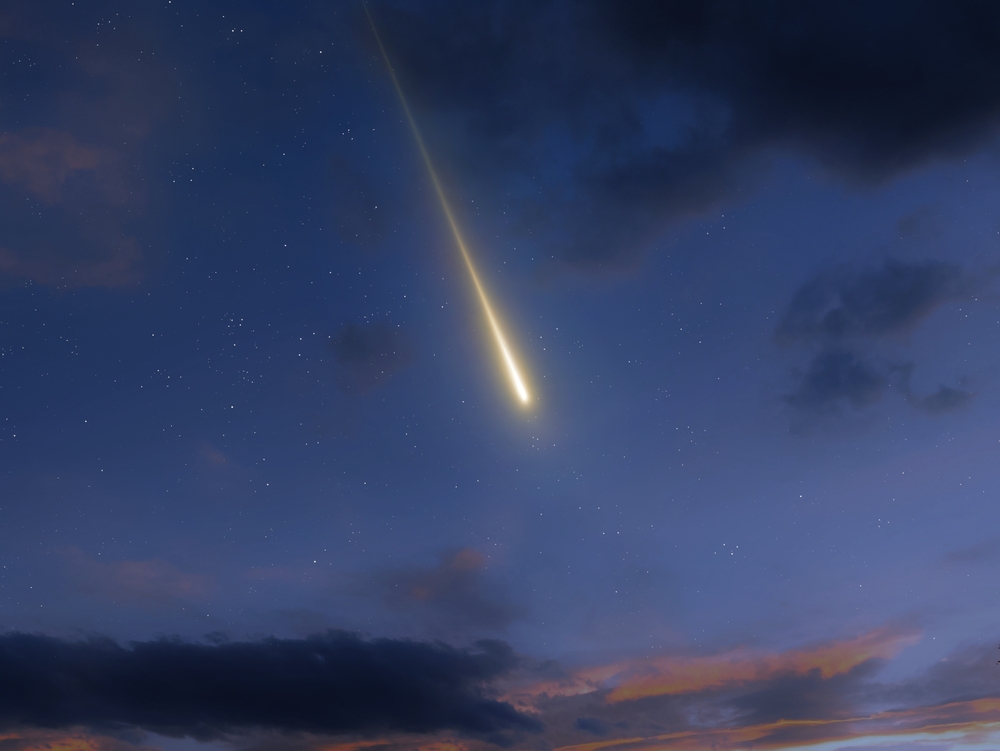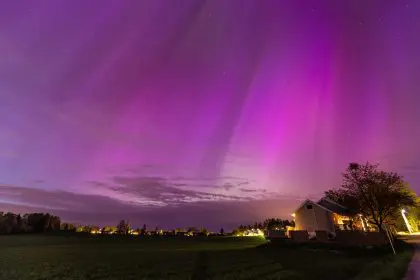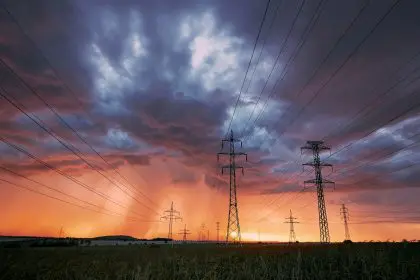A brilliant fireball meteor streaked across southeastern US skies on Thursday, June 26, 2025, creating a spectacular daylight display that was captured on multiple cameras and detected by sophisticated monitoring systems. The event generated more than 200 eyewitness reports within an hour, but the dramatic nature of the footage has led some to question whether the sighting was genuine or digitally fabricated.
Multiple independent verification methods confirm the authenticity of this rare celestial event, demonstrating how modern technology can distinguish between real astronomical phenomena and digital hoaxes that occasionally circulate on social media platforms.
NASA data confirms space rock characteristics
NASA analysis confirmed that the fireball originated from a space rock approximately 3 feet wide traveling at roughly 30,000 mph when it entered Earth’s atmosphere above Oxford, Georgia. The meteor burned up approximately 48 miles above ground before exploding at about 27 miles altitude with energy equivalent to 20 tons of TNT.
The explosion was powerful enough to rattle windows across multiple states and create sonic booms that residents described as earthquake-like, though no seismic activity was detected by monitoring stations. This combination of visual, auditory, and atmospheric effects provides multiple verification points that would be extremely difficult to fake convincingly.
Trajectory analysis using radar data and eyewitness reports allowed scientists to calculate the meteor’s path and determine where fragments might have fallen to Earth. This scientific analysis provides concrete evidence of the event’s authenticity through measurable physical phenomena.
Multiple detection systems captured the event
NOAA’s GOES-East satellite detected the meteor flash using its lightning mapping system, which is designed to monitor thunderstorms but also registers other bright atmospheric events. This satellite detection provides independent confirmation that cannot be easily manipulated or faked by amateur video creators.
Weather radar systems across the region detected falling debris from the meteor explosion, showing characteristic patterns that distinguish meteorite falls from other atmospheric phenomena. Radar signatures provide scientific data that supports eyewitness accounts and camera footage.
The American Meteor Society received reports from observers across Georgia, South Carolina, North Carolina, and Tennessee, creating a geographic pattern consistent with a single high-altitude event visible across a wide area. This distribution of sightings matches expected patterns for genuine meteor events.
Ground impact evidence supports authenticity claims
In Henry County, Georgia, a meteor fragment reportedly broke through a home’s roof, creating a golf ball-sized hole and causing interior damage but no injuries. Physical evidence of meteorite impact provides tangible proof that extends beyond visual documentation of the aerial event.
Recovery efforts near Blacksville, Georgia, have reportedly yielded meteorite fragments that can be scientifically analyzed to confirm their extraterrestrial origin. Laboratory analysis of these samples would provide definitive proof of the event’s authenticity through chemical and isotopic signatures unique to space rocks.
The timing correlation between the aerial fireball sighting and reported ground impacts creates a consistent timeline that supports the authenticity of both the visual event and its physical consequences on Earth’s surface.
Daylight visibility indicates exceptional brightness
Daytime fireballs are extremely rare, occurring only 10-20 times globally each year, because objects must be exceptionally bright to be visible against daylight sky conditions. This rarity makes the Georgia event particularly noteworthy and explains why it generated such widespread attention and documentation.
The meteor’s association with the Beta Taurids, a daytime meteor shower active in late June, provides astronomical context that supports the timing and characteristics of the observed event. Known meteor showers have predictable patterns that can be verified against historical data.
Multiple camera systems including doorbell cameras, dash cams, and security cameras captured the fireball from different angles and locations, creating a comprehensive visual record that would be extremely difficult to coordinate and fake across such a wide geographic area.
Scientific analysis continues verification process
Researchers are analyzing satellite data, radar recordings, and eyewitness reports to create detailed trajectory maps and determine the meteor’s likely origin in space. This ongoing scientific investigation provides additional layers of verification that distinguish genuine events from fabricated content.
The integration of data from multiple independent sources – satellite detection, radar tracking, eyewitness reports, and physical evidence – creates a comprehensive picture that supports the event’s authenticity. Hoax creators typically cannot reproduce this level of multi-system verification.
Community programs planned to share recovered meteorite samples and educate the public about meteor science demonstrate the ongoing scientific interest and verification efforts surrounding this event. Legitimate scientific engagement distinguishes genuine astronomical events from viral internet hoaxes.
The combination of multiple independent detection methods, physical evidence, scientific analysis, and geographic distribution of eyewitness reports provides overwhelming evidence for the authenticity of the Georgia fireball meteor event, showcasing how modern monitoring systems can verify rare natural phenomena.


















